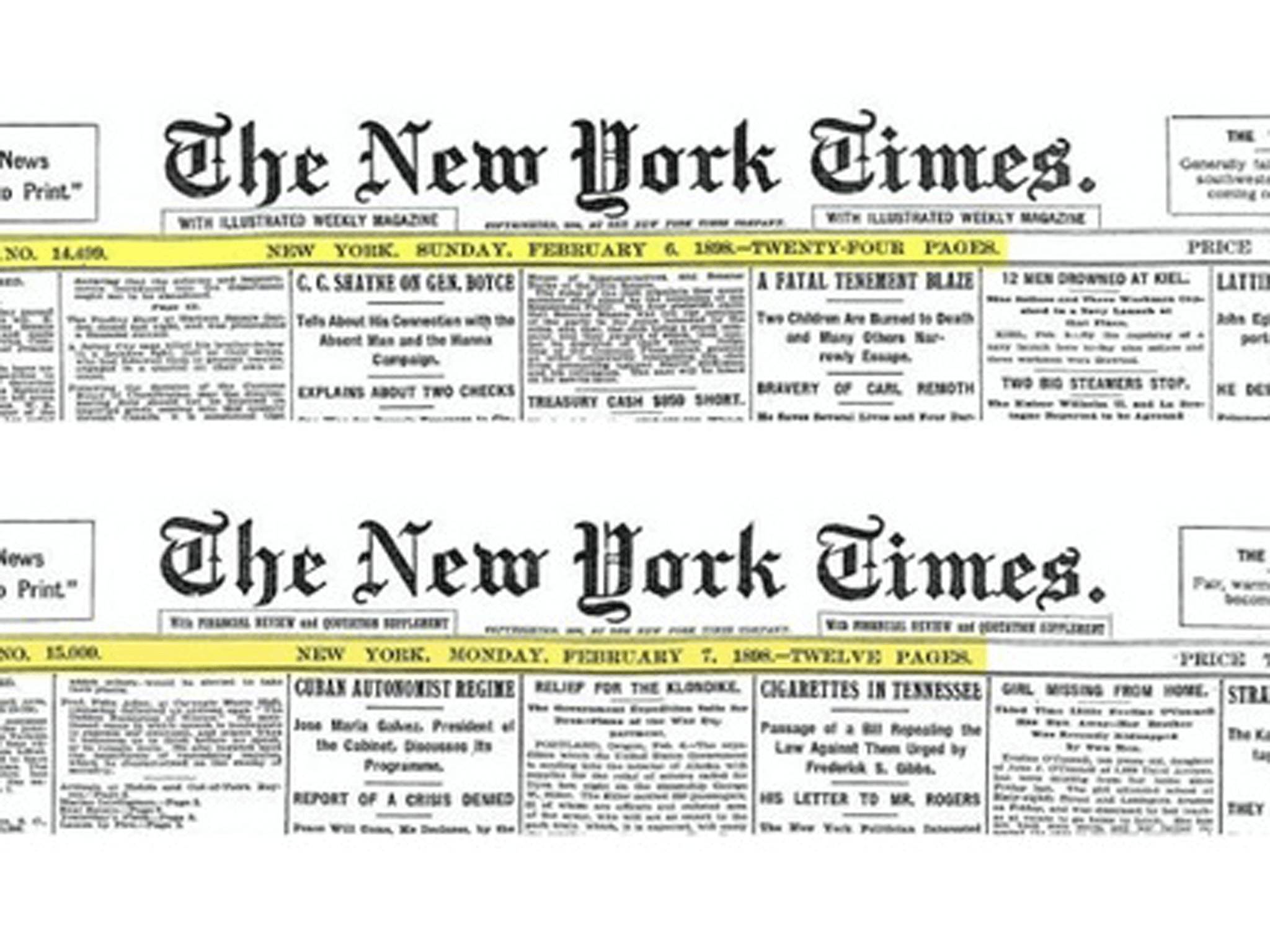The New York Times had a mistake on its front page every day for over a century
Celebratory 50,000th issue was actually number 49,500

Your support helps us to tell the story
This election is still a dead heat, according to most polls. In a fight with such wafer-thin margins, we need reporters on the ground talking to the people Trump and Harris are courting. Your support allows us to keep sending journalists to the story.
The Independent is trusted by 27 million Americans from across the entire political spectrum every month. Unlike many other quality news outlets, we choose not to lock you out of our reporting and analysis with paywalls. But quality journalism must still be paid for.
Help us keep bring these critical stories to light. Your support makes all the difference.
The dodgy arithmetic of one employee at the New York Times resulted in inaccurate issues numbers on the front page of every newspaper for over 100 years.
It seems that back in 1898 someone added one to 14,499 and got 15,000, with the huge jump in issues not being noticed until 2000.
How exactly the mistake was made isn't clear, but how it was spotted was cleared up in the mother of all correction notes published in the Times on the first day of the new millennium, and rediscovered by The Atlantic this week.
It read:
"The error came to light recently when Aaron Donovan, a news assistant, became curious about the numbering, which he updates nightly when working at the news desk. He wondered about the potential for self-perpetuating error. Using a spreadsheet program, he calculated the number of days since The Times's founding, on Sept. 18, 1851.
Through the newspaper's archives, he learned that in its first 500 weeks, The Times published no Sunday issue. Then, for 2,296 weeks from April 1861 to April 1905, the Sunday issue was treated as an extension of the Saturday paper, bearing its number. In the early days, the paper skipped publication on a few holidays. No issues were published for 88 days during a strike in 1978. (During five earlier labor disputes, unpublished issues were assigned numbers, sometimes because catch-up editions were later produced for the archives.)
Finally, by scanning books of historic front pages and reels of microfilm, Mr. Donovan zeroed in on the date of the 500-issue gap."
The issue number was eventually adjusted, but not before the publication congratulated itself on its 50,000th issue, which was actually number 49,500.
Subscribe to Independent Premium to bookmark this article
Want to bookmark your favourite articles and stories to read or reference later? Start your Independent Premium subscription today.
Join our commenting forum
Join thought-provoking conversations, follow other Independent readers and see their replies
Comments